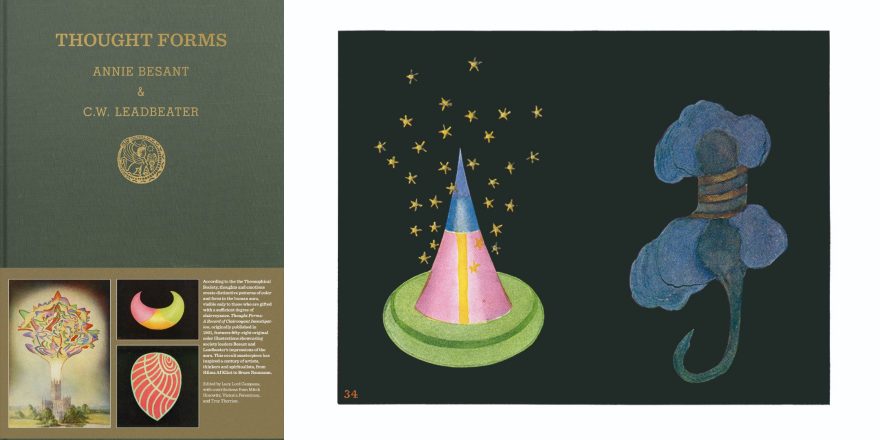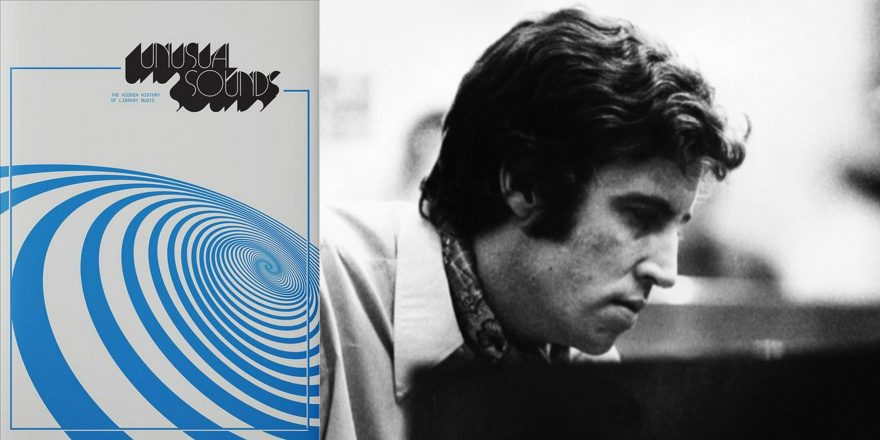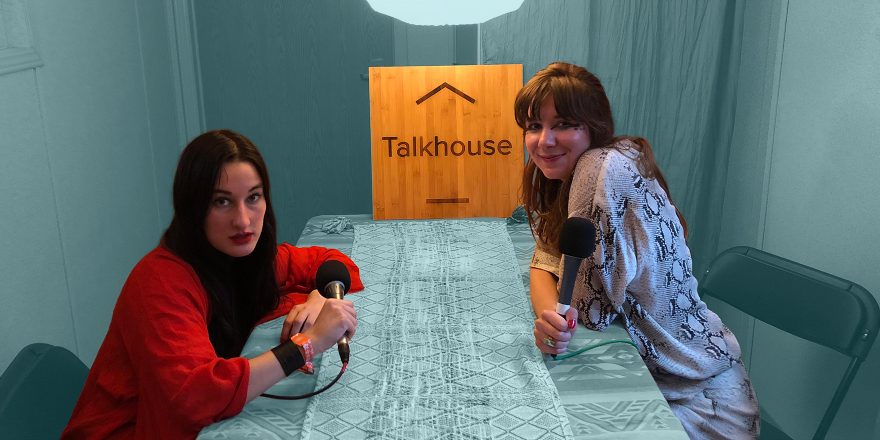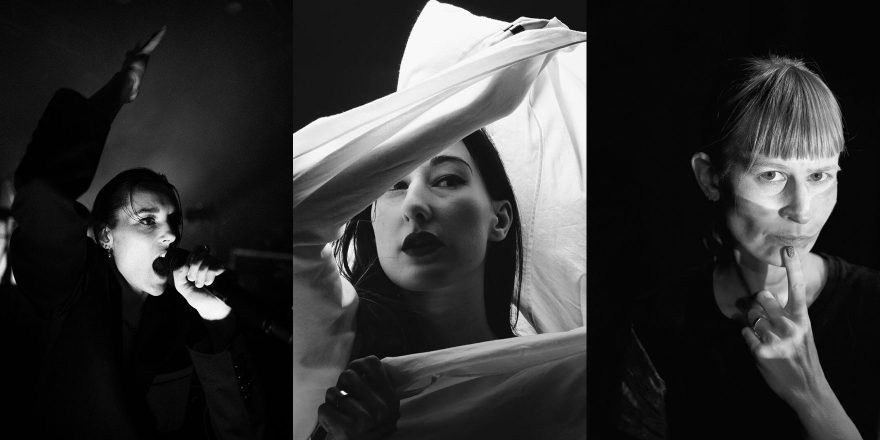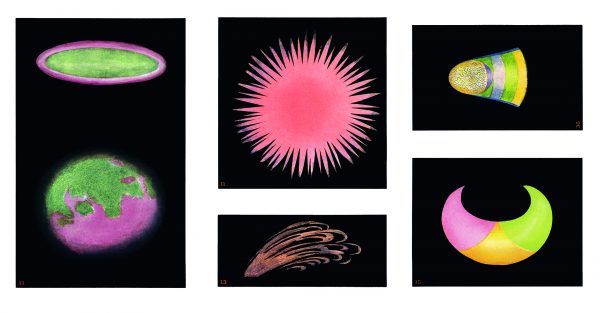
Ironically, the first copy of Thought Forms I was able to find was printed entirely in black and white. Originally published in 1905, Annie Besant and Charles W. Leadbeater created one of the first attempts to put form to thoughts and emotions which they believed took shape in the human aura. These wildly colored illustrations are unlike anything else made at that time, and even today, they’re strikingly unusual.

As an artist, I was initially drawn to this book for its strange imagery, but then was shocked to learn how influential and crucial it was to the beginnings of Western abstract art. I had gone through art school, but if I had ever heard of this book before I couldn’t recall it. In the classic art history cannon, Kandinsky and Mondrian are both key figures in the all-male group of pioneering abstract artists. Yet what has been left out of this narrative, is that they each consulted this book before departing from representational painting.
Thought Forms is one of the few illustrated texts published by the Theosophical Society. This spiritual movement was founded in New York City in the late 1800s and its influence reverberated around the world. The group’s motto was, “There is no religion higher than truth,” and their aim was to explore and seek out the esoteric truths within all religious and spiritual practices. Their practices were wide ranging: from their belief in the possibility to speak to supernatural deities, to the belief in an invisible field of vibrating energy that made up the human aura. Politically the theosophists were progressive as well, actively fighting colonial rule in India during World War I.
Many artists were members of this popular movement, and its teachings greatly influenced their work. Regardless, art historians and institutions historically have ignored Theosophy and argued for a purely formal analysis of their artwork. The reason for this omittance can most likely be pinpointed to an aversion to the occult.
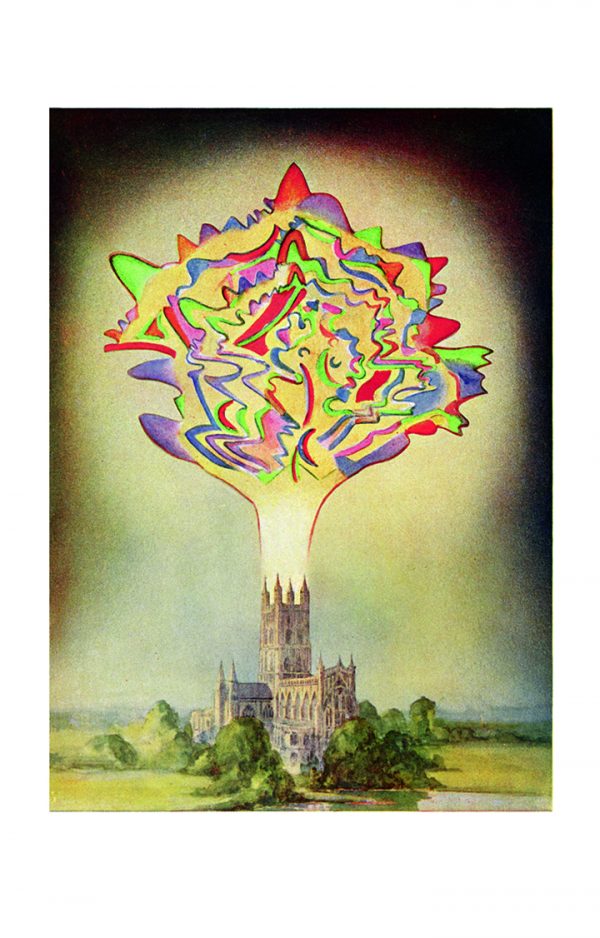
Last year, the Guggenheim’s Hilma af Klint show was one of the first times the all-male origin story of abstraction was challenged within the ivory tower. It broke attendance records and captivated the public. She had been a member of the Theosophical Society at the time Thought Forms was published, and must have come across this text. Af Klint made these paintings before Kandinsky et al, and she was a woman. This rewriting and inclusion of women into the history of abstract art, inspired me to republish Thought Forms. After my struggle to find a proper color copy, I wanted to reprint the very first edition, to see the book in the same way it originally had been seen.
While researching this book, I uncovered how deeply linked my own work is to the ideas in Thought Forms. Both Besant and Leadbeater claimed clairvoyance, therefore explaining how they could “see” these normally invisible formations of feelings they believed vibrate around you in your aura. Their desire to make visible the elusive and unknown deeply resonates with me.
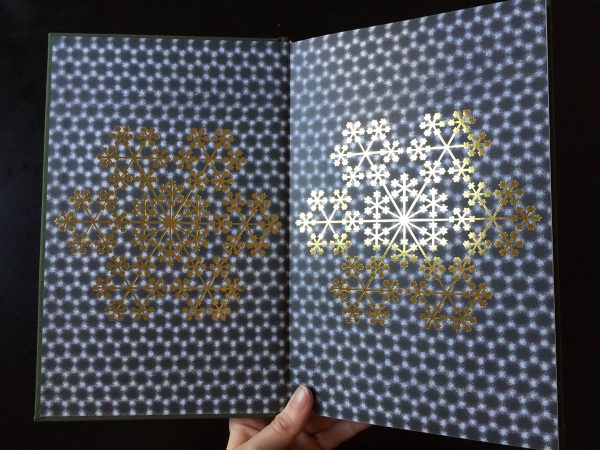
My artistic contribution to this edition of Thought Forms is the endpapers. The endpapers are collaged SEM images of a fabricated gold metasurface which lays on top of a sheet of graphene (the world’s first two-dimensional material) photodetector. Metamaterials are man-made surfaces that are extremely thin, only a few atoms thick. These surfaces are made to redirect light in ways that are not possible in nature. The gold structure has to be a fractal in order to enhance the light absorption. The desire of sculpting the trajectory of light, away from its natural destination and into the otherwise unknown is uniquely similar to both the clairvoyance of Besant and Leadbeater, as well as my own ongoing engagement with the possibilities of painting to render realities that exist beyond the human eye.
It’s inspiring to experience the ways scientific technology is expanding the limits of our vision, both in the ability to see outward into the expanse of space as well as through microscopic field of metamaterials. A prime example of the overlap between science and art is the Hubble Space Telescope. The Hubble orbits the earth and through its black and white photographs it allows for astronomers to see deep into space without the atmosphere obscuring its vision. Before these pictures are released to the public, Image Processors add color to the photographs, resulting in beautiful illustrations of space that sit on the line between truth and fiction.
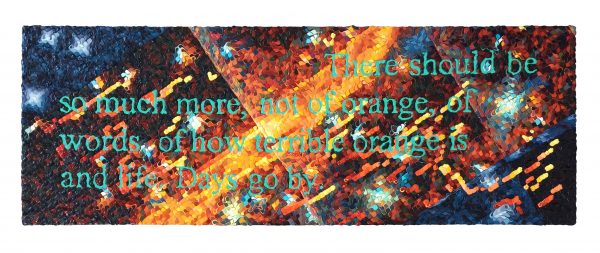
Again and again, I’ll return to the Hubble images as a way to generate paintings. It’s a method for myself to create work and I’ll only paint an image if it leads me to other things. For example, I was reading Frank O’Hara’s poem “Why I Am Not a Painter” and felt drawn to its despair over the color orange. Later that day this moment happened when I looked at NASA’s most recent Hubble “Picture of the Week” and there it was — this strange orange column of matter in the sky. There’s a sort of happenstance where things fit into place, and I think through being very aware of these moments that’s when the art happens. Besant believed that through observing your own aura you become more aware of your thoughts and can better see inward. It’s a strange, sort of similar pursuit of truth within the unseeable. There is a parallel with the occult and science in that they both attempt to grasp the unknown. I think this is something many artists can identify with.
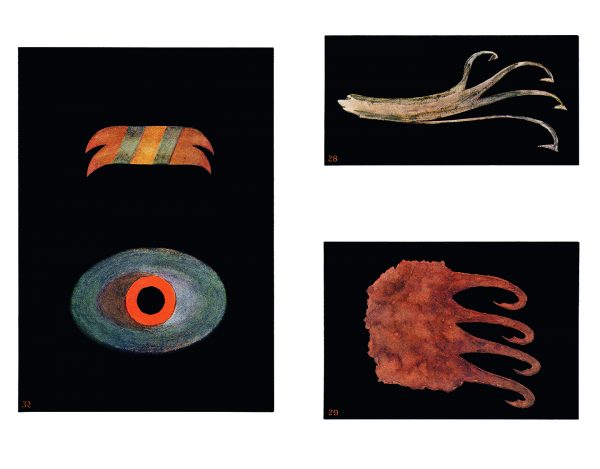
Something I loved about republishing this book has been working with so many great people, all of whom stem out of these very ideas contained in the book. Working with Carrie Schaff, Brad Sanders and Caleb Braaten at Sacred Bones, we found wonderful collaborators who contributed introductions to our edition. We discovered that the book’s well known origin date of 1901 was incorrect, it was actually published in 1905. I was able to work with Dr. Alexandra Boltasseva and Di Wang at Purdue University on the endpapers. I think this edition of Thought Forms brings this beautiful book into the present, so it may once again be widely accessible the way it was meant to be seen, and no longer omitted from the past.
Thought Forms is available for purchase now. 


